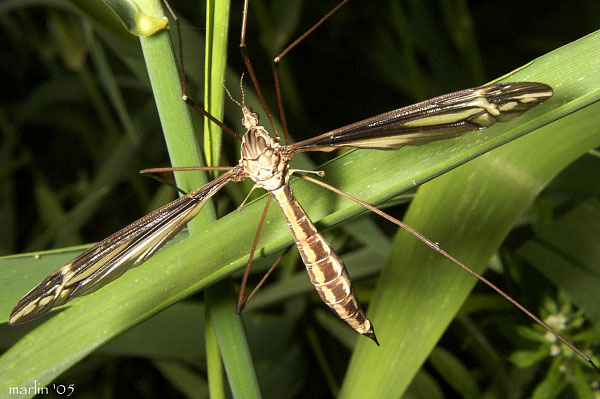Crane Fly – Tipula caloptera
This is the largest crane fly I’ve ever seen – easily 80 mm wingspan, approx. 150 mm overall, including legs. No slouch flier, this female, either – she took off like a bat out of hell when she’d had enough of me. Just as the large Tipula dorsimacula I’d encountered only 50 feet from this spot last year, the tip of her abdomen was wet as if she’d been ovipositing. Wish I could catch one in the act.
Thanks to Dr. Chen Young of Carnegie Museum of Natural History for help in classifying these specimens.
Crane fly habitat: Humid areas near ponds, streams, marshes. Range: Worldwide.
Food: Adult crane flies do not feed. Fly larvae feed on decaying vegetation, fungi and roots.
Life Cycle: Slender eggs are laid on moist soil or mud near open water. Fully grown larvae pupate overwinter in the soil, emerge in spring.
Flies of North America – Order Diptera. Flies are prevalent in virtually all habitats, with over 16,000 species in North America. Flies can be distinguished from all other insects in that they only have one pair of normal wings. Most flies have compound eyes and mouthparts adapted for piercing, lapping or sucking fluids.
Insects & Spiders | Flies Index | Syrphidae | Bee Flies | Robber Flies | Blow Flies | Flesh Flies

